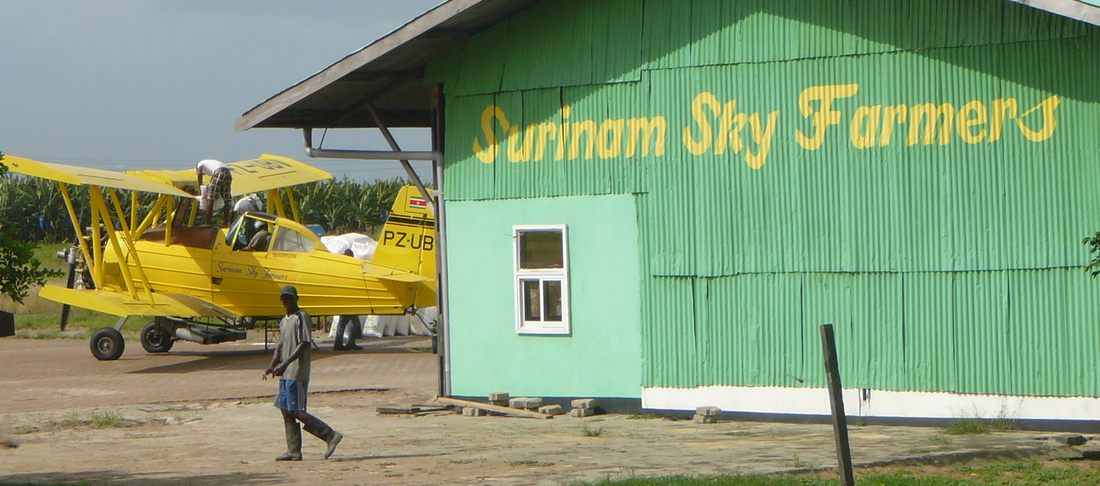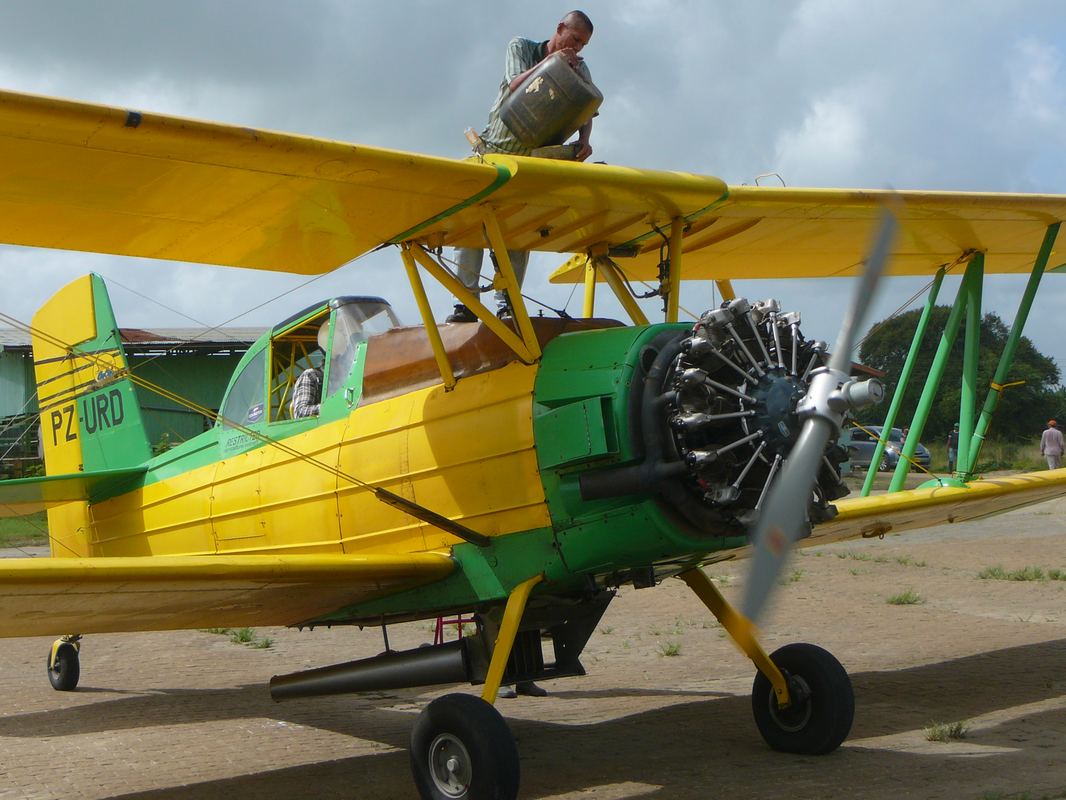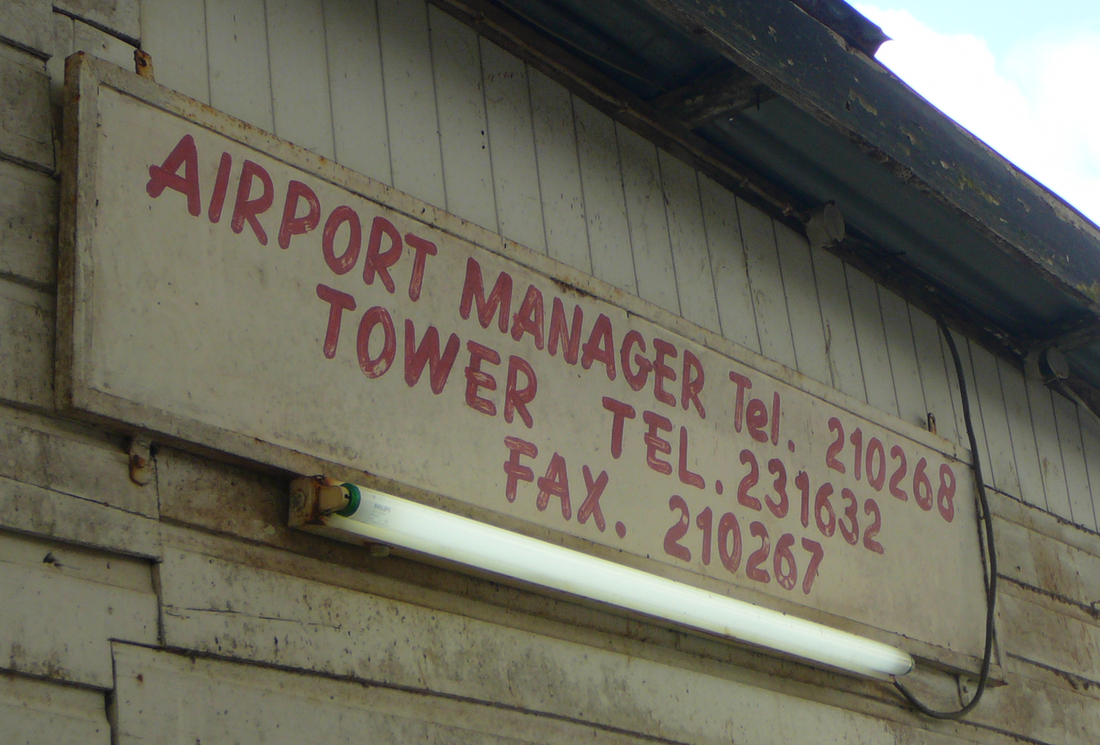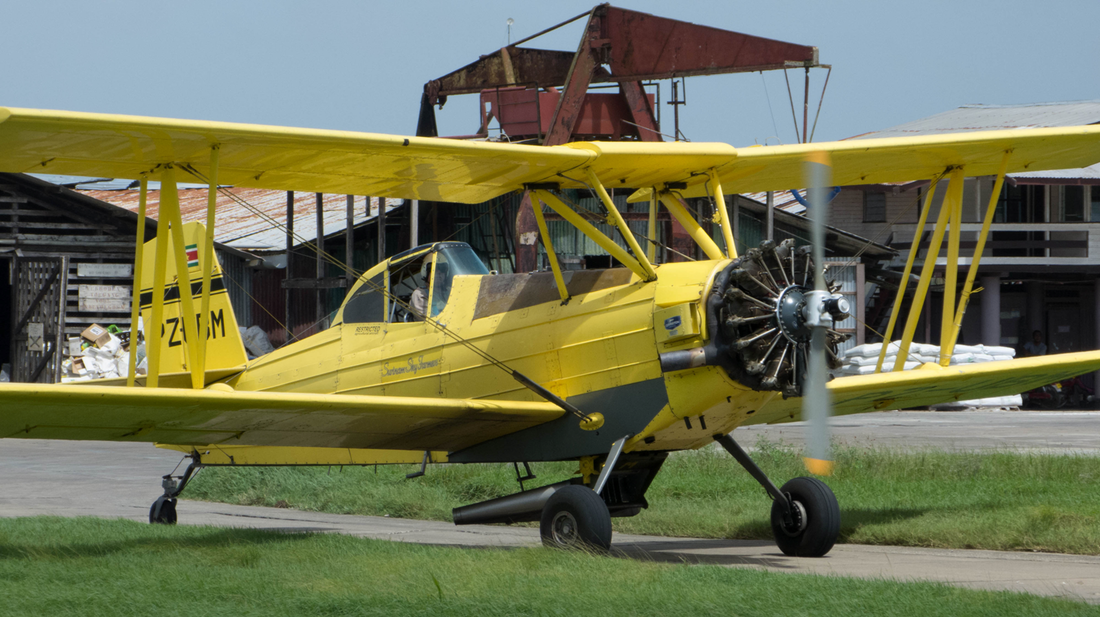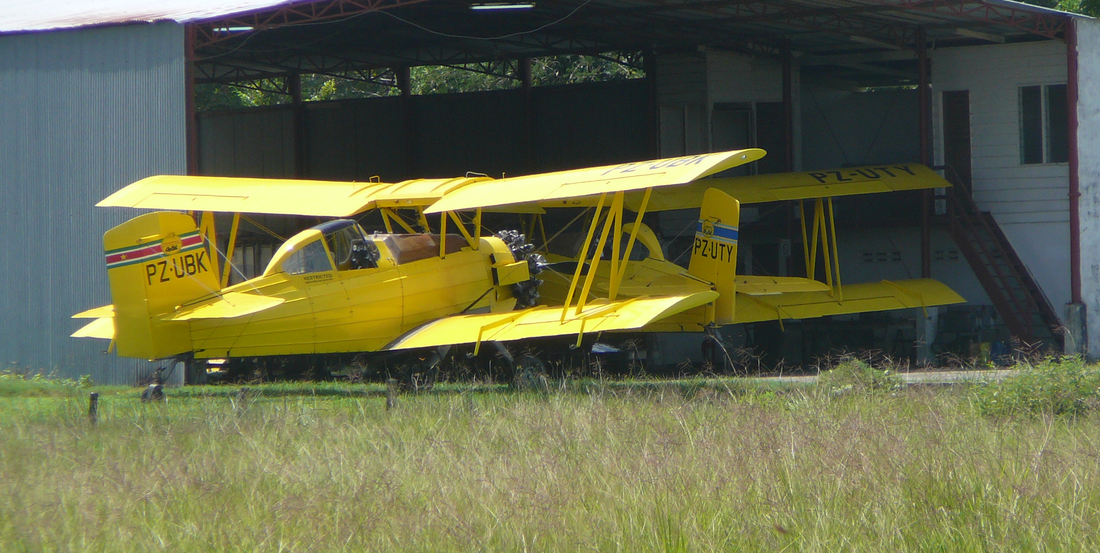Surinam Sky Farmers
Ag-Cat operations in Surinam
By Jan Koppen
|
The Gummels
On 13 March 1964 the brothers Gerhard Gummels and Eduard Gummels formed the airline Surinam Sky Farmers with the aim to promote mechanized farming. The company started with two Grumman "AG-CAT" agricultural aircraft. The beginning was hard, but there was a growth opportunity in this sector. Reason enough that their three other brothers joined the company, two as a pilot and one as a mechanic. The fleet was also expanded and soon there were four aircraft in the hangar. A major contribution was made in the production of paddy (rice cultivation in) and bacove (bananas). Sowing, spraying and fertilizing with aircraft had ensured that the scale of farms could be increased. The company gained decades experience and a steady growth followed. Also the brothers constantly invested in expanding and updating the fleet and training their pilots. At one time the company had 16 aircraft. During the early years of the reservoir in Brokopondo, the company had also made a contribution to fighting the water hyacinths. Due to the size of the lake, it was necessary to work not only from the water, but also do from the air. Surinam Sky Farmers operates from all airports in the coastal area of Suriname. The company is also active in the rice sector of French Guyana . Over 50 years Surinam Sky Farmers has carried out approximately 219,000 flight hours, with a total of 754,000 flights. In 1971 Gum Air was established as a subsidiary of the Surinam Sky Farmers. This airlines transports people and goods to both domestic as well as abroad and has 11 aircraft. Today are 80 men and woman working for the two companies. The Ag-Cat The Grumman G-164 Ag Cat is a single-engine biplane agricultural aircraft, developed by Grumman in the 1950s. The Ag Cat was the first aircraft specifically designed by a major aircraft company for agricultural aviation. In 1955, Grumman preliminary design engineers Joe Lippert and Arthur Koch proposed the design for a "purpose built" crop dusting airplane as a means of fulfilling a pressing need in the agricultural community as well as the perceived need for Grumman to diversify its product lines. The first G-164, which was built by Grumman, accomplished its maiden flight on May 27, 1957 with Grumman test pilot Hank Kurt at the controls. At this time, the Grumman G-164 did not have a name. Leroy Grumman suggested "The Grasshopper." However, Dick Reade suggested "Ag-Cat," following Grumman's naming tradition using the suffix "-Cat" in aircraft names (e.g., F4F Wildcat and F6F Hellcat). Mr. Grumman agreed and the Grumman G-164 became the "Ag-Cat." Large military orders prevented the production of the Ag-Cat at Grumman's Bethpage facility. Grumman's Board of Directors chose to subcontract the entire program to the Schweizer Aircraft Company of Elmira, New York. Initial production was through a contract between Schweizer Aircraft Corporation,[4] and Grumman. The first Schweizer-built Ag-Cat, bearing registration number N10200 flew on October 17, 1958 under the control of Schweizer test pilot Clyde Cook.[3] Full production began in January 1959 with Schweizer delivering 12 FAA certified airplanes to Grumman by March 1959. The FAA granted type certification on January 20, 1959. Schweizer Ag-Cats The ownership of the Ag-Cat design has changed hands several times. Grumman transferred ownership to its commercial aircraft subsidiary, Grumman American, in 1973. The Grumman American subsidiary, which also owned the Grumman Gulfstream design series, was sold to American Jet Industries in 1978. From initial production through 1981, Schweizer built 2,455 aircraft under contract.[6] In 1981 Schweizer bought the rights to the design and continued production under the name Schweizer Ag-Cat. Schweizer sold the design to Ag-Cat Corp. of Malden, Missouri in 1995. That company entered banktruptcy and no aircraft were produced. In February 2001 the design was sold to Allied Ag-Cat Productions Inc. of Walnut Ridge, Arkansas. Allied Ag-Cat are not producing new aircraft although a related company operates a large fleet of Ag-Cats. The basic airframe incorporates many safety innovations, including a pressurized cockpit to keep pesticides out, air conditioning and a fuselage structure that is designed to progressively collapse in the event of a collision. Radial variations Ag Cat The basic model Ag Cat was certified with four different engines: the 220-225 hp (164-168 kW) Continental Motors radial engine, the 240 hp (179 kW) Gulf Coast W-670-240 radial engine, the 245 hp (183 kW) Jacobs L-4M or L-4MB radial engine and the 275-300 hp (205-224 kW) Jacobs R-755 radial engine. A total of 400 of this model were produced. Super Ag Cat A/450 The G-164A became the main model starting with serial number 401. This model featured a 450 hp (335 kW) Pratt & Whitney R-985 radial engine along with a higher gross weight, increased fuel capacity, larger diameter wheels and improved brakes. Super Ag Cat A/600 The A/600 incorporated the same improvements embodied in the A/400, but was powered by a Pratt & Whitney R-1340 radial engine of 600 hp (450 kW). Super Ag Cat B/450 The B/450 improved on the "A" model by increasing the wingspan from 35 ft 11 in (10.95 m) to 42 ft 3 in (12.88 m). The fin and rudder were enlarged and the fuselage was also lengthened. The upper wing was raised on the "B" model by 8 in (20 cm) do reduce aerodynamic interference between the wings and improve cockpit visibility. Super Ag Cat B/525 The B/525 incorporated the design improvements of the B/450, but was powered by a Continental /Page R-975 engine. Super Ag Cat C/600 The C/600 first flew in 1976. It is similar to the model B/450 but has its fuselage further stretched to incorporate a 500 US gal (1,892 l) agricultural hopper. The model is powered by a 600 hp (450 kW) Pratt & Whitney R-1340 radial engine. Ag Cat B-Plus/600 Introduced in 1982 the B-Plus/600 is powered by a Pratt & Whitney R-1340 of 600 hp (450 kW). It has the larger hopper of the "C" model.Ag Cat B-Plus/450 Also made available for the first time in 1982 the lowered powered B-Plus/450 is powered by a Pratt & Whitney R-985 of 450 hp (335 kW). This model was available only as a custom order. |
Header photo : PZ-UBV coming in to land at the very small of Surinam Sky Farmers base at the Manglie factory, some 10 kilometers east of Nieuw-Nickerie.
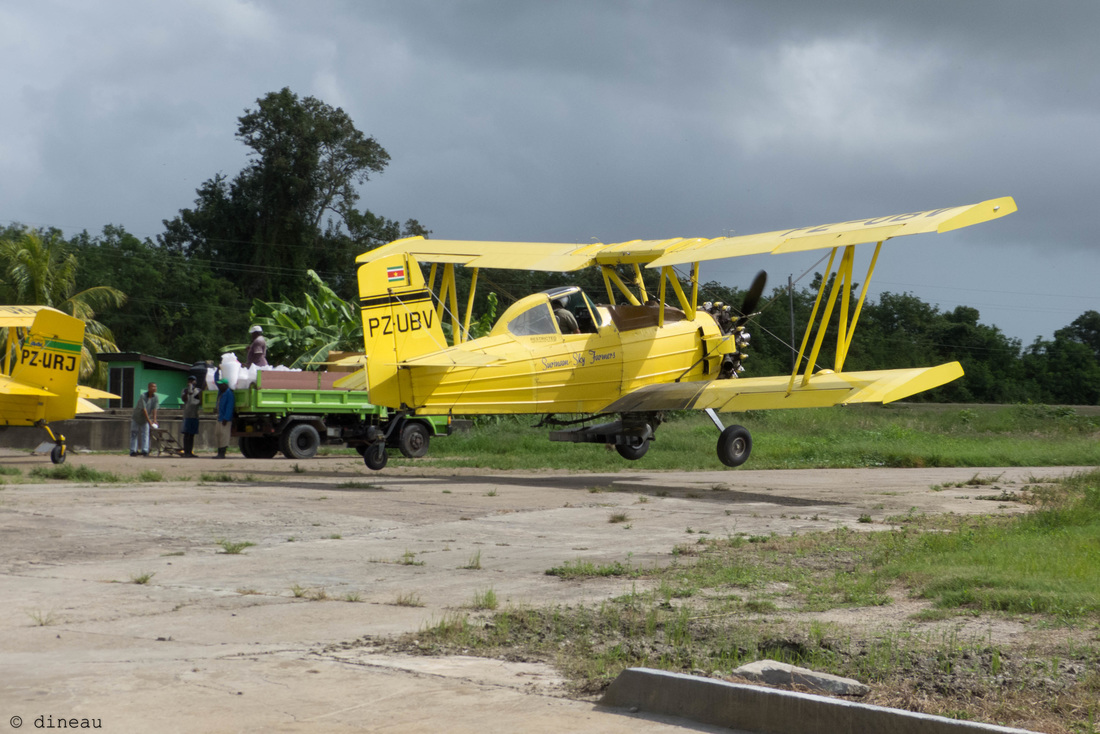
A second from touch-down. PZ-UBV is a Super Ag Cat B. The B/450 improved on the "A" model by increasing the wingspan from 35 ft 11 in (10.95 m) to 42 ft 3 in (12.88 m). The fin and rudder were enlarged and the fuselage was also lengthened.The upper wing was raised on the "B" model by 8 in (20 cm) do reduce aerodynamic interference between the wings and improve cockpit visibility
|
|
Nieuw-Nickerie Airport
Majoor Henry Fernandes Airport (IATA:ICK, ICAO: SMNI), also known as Nieuw-Nickerie Airport, is located near Nieuw Nickerie, the capital city of the Nickerie district inSuriname. This is one of the oldest airport in Suriname, in use since 1953, when the Piper Cub (PZ-NAC) of Kappel-van Eyck named "Colibri" landed there from Zorg en Hoop Airport. |
|
|
Wageningen Airstrip
Wageningen Airstrip (IATA: AGI, ICAO:SMWA), near Wageningen, in the Nickerie District of Suriname. Heavily used for cropdusting agriculture flights in this rice region of the country. Homebase of the Surinam Sky Farmers |

